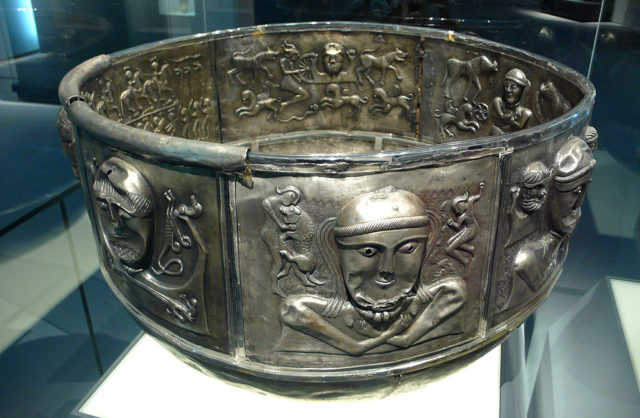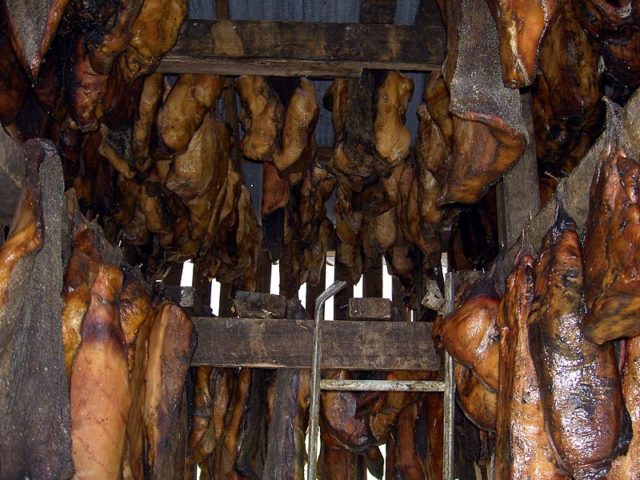The Vikings are famed for their great feasting halls, in which an image of a hooligan group of beer-consuming men chewing on meaty bones pops into mind. But what did they actually do besides consume beer and mead in their dining rooms?
They actually had a varied and rich diet of both wild and domestic animals, fruits and grains, fowl, fish, and some other items that they could grow, gather, or hunt from nature.
It seems that their diet was much better and more varied than other parts of medieval Europe.
That said, studies on the contents of ancient sewers and cesspits have shown that the Vikings suffered from intestinal worms and other parasites, and also that they sometimes ingested weeds that were somewhat toxic to humans.

Beached whales were a significant part of Viking diet. Scholars have researched garbage heaps and middens to discover what kind of animal bone were in them, examined lake bottoms and bogs to see what types of plants they ate, and as well read sagas and eddas for indications of their culinary habits and diets.
The Vikings did not fry or roast their meat, but instead boiled it. Some of the meat was game but, particularly in the lower latitudes, they consumed domesticated pork, goats, sheep, horses, and cattle.
The most significant type of livestock was cattle, which was noted from bone remnants. Wooden remains of holding pen partitions show that several farms had up to 80 to 100 animals.
Vikings as well kept chickens, geese, and ducks for eggs and meat. In the northern lands the Vikings hunted more, and took squirrels, boar, and elk. They still hunted in the south too.
The Vikings fished the Baltic Sea and Atlantic Ocean for mackerel, haddock, and cod, among other fish. They fished rivers for shellfish, and salmon from salt and fresh water.
They hunted seals and porpoises, yet they normally prepared them specially. They would preserve the meat by drying, pickling, fermenting, and smoking it. In the far North they would freeze it throughout the year.

Fruits, vegetables, dairy, and seeds for oil were a large part of the Viking diet. They consumed various kinds of plums, sloes, and apples, preserving them by drying.
They grew food in gardens and collected wild vegetables such as radishes, peas, beans, fava, cabbage, celery, spinach, parsnips, turnips, and carrots.
They also ate onions, mushrooms, seaweed, and leeks. While they consumed rye, barley, oats, and flatbread, but used most grains to make beer.
There is proof from Dublin that the Vikings used fennel, black mustard, and poppy seeds to flavor their food.
The Oseberg burial site exposed their use of horseradish, mustard, cumin, and watercress. Some other spices were garlic, juniper berries, wild caraway, marjoram, thyme, mint, parsley, and lovage.
By the Middle Ages, Scandinavia had access to exotic spices through trading.
They traded for bay leaves, anise seed, cinnamon, mace, nutmeg, cloves, grains of paradise, cardamom, ginger, saffron, cumin, and pepper. They also drank water, whey, milk, and mead.
